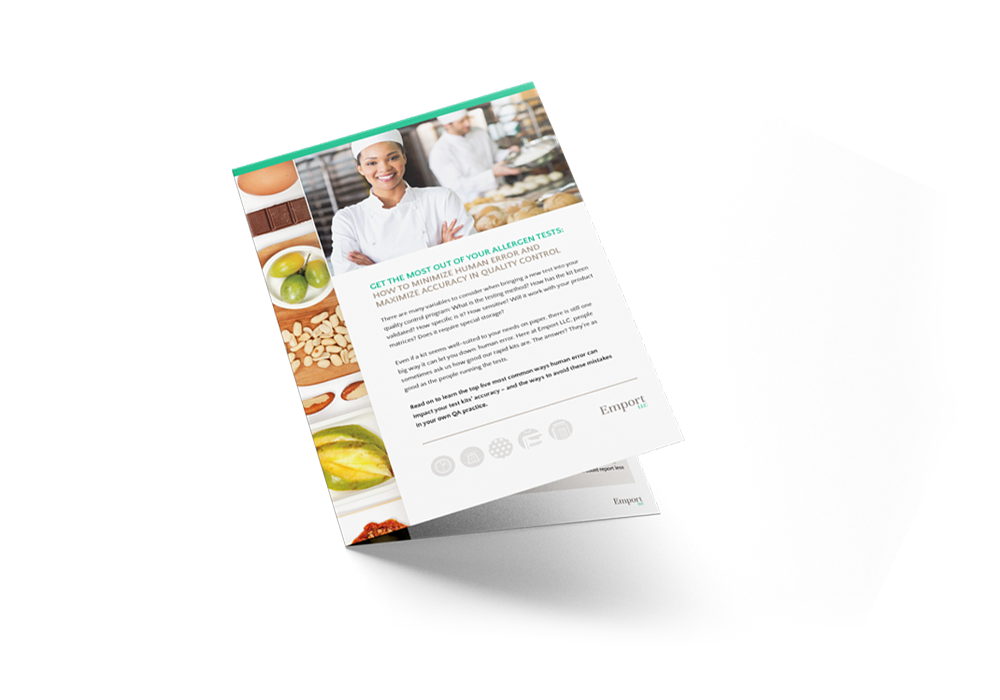
In the first installment of a two-part post on Precautionary Labeling, we examined the difficulties the average consumer faces in purchasing food for someone with allergen sensitivities. Studies revealed consumers have a relatively difficult time confidently selecting allergen-free products for members of their family. With no legal guidelines on how a manufacturer should label a product that may have come into contact with one or more of the “Big 8” allergens, consumers are forced to form their own risk evaluations.
While it is mandatory to identify the eight major allergens when knowingly included in a food, cautionary statements addressing possible cross-contamination are voluntary. These voluntary “may contain” statements are better known as precautionary allergen labeling (PAL). PAL are used by the food industry as a way to explain the possibility of unintentional cross-contamination of allergens during production with clear label statements.

Food Travels, Literally
Cross-contact is sometimes inevitable. Ingredients are imported from all over the world, and allergy awareness is different from place to place. Facilities that harvest, process, package, and ship ingredients can work with many different types of foods including some of the top allergens. Cross-contact may also be found in a manufacturing facility that runs products with and without allergens.
Uncertain of the degree of potential risk and fearing recalls or liability, many manufacturers tend to use multiple label statements as a safety precaution. However this can dangerous to the consumer; these label statements are not meant to be used in lieu of or as an alternative to proper risk management practices.
Resources for Manufacturers
Despite ubiquitous food labeling in the United States, the FDA urges manufacturers to maintain good manufacturing practices (GMPs). GMPs should be standard protocol in every facility, to minimize risk and provide a system for regulation and compliance. A facility that relies on GMPs can more accurately determine which foods have sufficient risk of cross-contact to need advisory labels. The FDA clearly states that these statements should not be placed in lieu of GMPs and strongly advises that all measures be taken to eliminate even the slightest possibility of contamination. Identifying and eliminating contaminants from food should always be a priority for food manufacturers.
When Should PAL be Used?
It’s very hard to assume zero risk when dealing with possible cross-contact of contaminants, and while GMPs are paramount in any food manufacturer’s quality control plan, there are some cases in which PAL is needed and encouraged. In those instances, consumers can be best helped if every manufacturer uses PAL in the same way. Uniformity on how PAL is used among food industry professionals will, in turn, provide clarity for consumers. The Food Allergy Research and Resource Program from the University of Nebraska, Lincoln is a wonderful resource for both food industry professionals and manufacturers. FARRP has recommended four conditions in which PAL on food should be used:
1. Allergen contamination is thoroughly documented
Contamination is either visible, reported by consumer/customer or a positive result was obtained via a verified testing kit.
2. Contamination is sporadic
If a known allergen is listed as the final ingredient, contamination is NOT sporadic
3. Contamination is uncontrollable
Labels are not a substitute for GMPs, which can help control the vast majority of contamination.
4. Contamination is potentially hazardous
Is it visible or gathered from credible consumer complaints? If so, this possible cross-contamination can potentially be hazardous and should be labeled accordingly.
Conclusion
Experts are pushing for stronger policy recommendations by the FDA, and encouraging the food industry to simplify their allergen statements to a uniform label. Only through this standardization of food labeling will allergic consumers be able to evaluate risk of exposure when deciding whether to eat a food. By adopting these standards for PAL, manufacturers will be able to effectively communicate risk levels to consumers. What’s more, manufacturers who can provide customers with clear and concise information about their use of PAL increase trust in their own brands and industry-wide.






